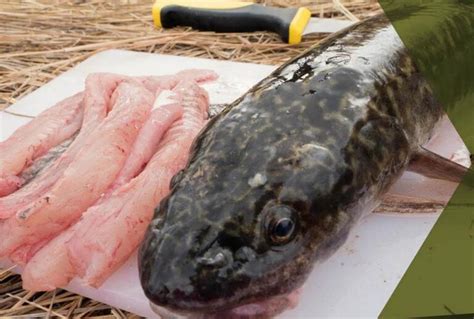
Cusk, an often-overlooked fish species, is gaining popularity as a cost-effective alternative to lobster, boasting a similar taste profile at a fraction of the price.
Often relegated to the shadow of more popular catches, cusk, a member of the cod family, is increasingly being recognized by chefs and home cooks alike for its sweet, firm, and flaky white flesh. This newfound appreciation stems from its remarkably similar flavor to lobster, making it an appealing option for those seeking a gourmet experience without the hefty price tag. “It’s flaky, it’s white, it’s got a really sweet flavor, so it kind of eats like a lobster,” said Spencer Davis, Culinary Director at Boston-based restaurant Mooncusser Fish House.
Affordable Luxury: Cusk’s Rising Popularity
While lobster prices can fluctuate wildly, often reaching exorbitant levels, cusk remains a relatively stable and affordable option. This price difference is a major driver of its increasing demand, especially in regions where lobster is a local delicacy but may be financially prohibitive for regular consumption. For budget-conscious consumers and restaurants seeking to offer high-quality seafood dishes at competitive prices, cusk presents a compelling solution. The shift towards cusk also aligns with a broader movement towards sustainable seafood choices and diversifying consumption beyond overfished species.
Culinary Versatility: Preparing Cusk
Cusk’s mild flavor and firm texture make it incredibly versatile in the kitchen. It can be baked, broiled, grilled, pan-fried, or even used in seafood stews and chowders. Chefs recommend treating it similarly to how you would prepare cod or haddock. Its ability to absorb flavors makes it an excellent canvas for various sauces, spices, and herbs.
“You can do anything with it,” said Davis. He recommends simple preparations like pan-searing with butter and herbs to highlight the fish’s natural sweetness. Its firm texture also holds up well in more robust dishes, making it a suitable substitute for lobster in recipes like lobster rolls or seafood pasta.
Sustainability and Availability
Cusk is primarily found in the North Atlantic, ranging from Newfoundland and Labrador to the waters off New Jersey. While not as widely available as other common fish species, cusk is becoming increasingly accessible through seafood markets and online retailers that specialize in sustainable seafood.
The sustainability of cusk fisheries varies depending on the region and management practices. Responsible harvesting methods are crucial to ensure the long-term health of cusk populations. Consumers are encouraged to look for certifications like the Marine Stewardship Council (MSC) to ensure they are purchasing cusk from sustainably managed fisheries. The Gulf of Maine Research Institute provides resources for consumers to learn more about sustainable seafood choices in their region.
A Chef’s Perspective: Embracing Underutilized Species
The rise of cusk reflects a growing trend in the culinary world towards embracing underutilized fish species. Chefs are increasingly seeking out lesser-known varieties, not only for their unique flavor profiles but also as a way to promote sustainable fishing practices and reduce pressure on overfished stocks. By highlighting these alternative options, they can educate consumers about the diversity of seafood available and encourage more responsible consumption habits.
According to Davis, using cusk also provides an opportunity to get creative in the kitchen: “It’s really cool as a chef to be able to work with something that nobody else is working with.” He highlights the importance of educating consumers about the benefits of choosing underutilized species and showcasing their culinary potential through innovative dishes.
Health Benefits of Cusk
Like other white fish varieties, cusk is a lean source of protein, providing essential amino acids for muscle building and overall health. It is also low in fat and calories, making it a heart-healthy choice. Additionally, cusk contains essential nutrients such as vitamin B12, which is important for nerve function and red blood cell production, and selenium, an antioxidant that supports immune function.
Cusk vs. Lobster: A Detailed Comparison
While cusk is often touted as a lobster alternative, it’s important to understand the nuances of their flavor and texture differences. Lobster has a distinctively rich and sweet flavor, with a slightly firmer and more succulent texture than cusk. Cusk, on the other hand, has a milder, sweeter flavor that is often described as delicate. Its texture is firm and flaky, but not quite as dense as lobster.
The cooking methods also differ slightly. Lobster is often boiled, steamed, or grilled, while cusk is more commonly baked, broiled, or pan-fried. The choice between the two ultimately depends on personal preference and budget considerations. For those seeking a luxurious seafood experience, lobster remains a top choice. However, for those looking for a more affordable and sustainable option, cusk provides a delicious and satisfying alternative.
Beyond Flavor: The Environmental Impact
Choosing cusk over lobster can also have positive environmental implications. Lobster fisheries, particularly in certain regions, have faced challenges related to overfishing and habitat damage. By opting for cusk, consumers can help reduce demand for lobster and support fisheries that are managed more sustainably. This is especially important in the context of climate change, which is impacting marine ecosystems and the distribution of fish species. Supporting sustainable seafood choices can help ensure the long-term health and resilience of our oceans.
Preparing Cusk at Home: Recipes and Tips
Cooking cusk at home is relatively simple, even for novice cooks. Here are a few tips and recipe ideas to get started:
- Pan-Seared Cusk with Lemon-Butter Sauce: Season cusk fillets with salt, pepper, and a pinch of garlic powder. Heat a skillet over medium-high heat with olive oil or butter. Sear the fillets for 3-4 minutes per side, until golden brown and cooked through. Remove the fillets from the skillet and set aside. In the same skillet, melt butter and add lemon juice, chopped parsley, and a pinch of red pepper flakes. Pour the sauce over the cusk fillets and serve immediately.
- Baked Cusk with Roasted Vegetables: Preheat oven to 400°F (200°C). Toss chopped vegetables like broccoli, carrots, and bell peppers with olive oil, salt, pepper, and your favorite herbs. Spread the vegetables on a baking sheet and bake for 20 minutes. Place cusk fillets on top of the vegetables and bake for another 10-15 minutes, until the fish is cooked through.
- Cusk Chowder: Sauté diced onions, celery, and potatoes in a pot with butter until softened. Add fish broth or chicken broth and bring to a simmer. Add diced cusk fillets and cook until the fish is cooked through. Stir in cream or milk and season with salt, pepper, and fresh herbs like thyme or parsley.
- Cusk Tacos: Grill or pan-fry cusk fillets and flake the fish with a fork. Serve in warm tortillas with your favorite taco toppings, such as shredded cabbage, pico de gallo, avocado, and lime wedges.
The Future of Cusk: A Sustainable Seafood Star?
As consumer awareness of sustainable seafood options grows, cusk is poised to become a more prominent fixture in the culinary landscape. Its affordability, versatility, and environmental benefits make it an appealing choice for both home cooks and chefs. By supporting responsible fishing practices and promoting the consumption of underutilized species, we can help ensure the long-term health of our oceans and enjoy delicious, sustainable seafood for generations to come.
The culinary world is constantly evolving, with chefs and consumers alike seeking new and exciting flavors. Cusk offers a unique opportunity to explore the diversity of seafood and embrace a more sustainable approach to dining. As more people discover the deliciousness and versatility of cusk, it is likely to become a staple on menus and dinner tables across the country.
Detailed Information About Cusk Fish
Cusk ( Brosme brosme ) is a fascinating and underappreciated fish species belonging to the cod family (Gadidae). Its unique characteristics and increasing recognition as a sustainable and affordable seafood option warrant a deeper dive into its biology, habitat, fishing practices, and culinary applications.
Biology and Identification:
Cusk is a bottom-dwelling fish characterized by its elongated body, a single barbel on its chin, and a continuous dorsal and anal fin that runs along most of its body. Its color can vary from reddish-brown to olive-green, often with darker mottling. Cusk can grow up to 4 feet in length and weigh over 50 pounds, although most commercially caught individuals are smaller. The single, continuous fin distinguishes cusk from its cod relatives, which have distinct dorsal fins.
Habitat and Distribution:
Cusk is primarily found in the cold waters of the North Atlantic Ocean. Its range extends from Newfoundland and Labrador in Canada to the waters off New Jersey in the United States, and across the Atlantic to Iceland, Norway, and the British Isles. Cusk typically inhabits rocky bottoms and deep-sea environments, often at depths ranging from 60 to 1,000 meters (200 to 3,300 feet). They prefer areas with complex underwater structures that provide shelter and foraging opportunities.
Diet and Feeding Habits:
Cusk is a predatory fish with a varied diet that includes crustaceans, mollusks, worms, and smaller fish. They are opportunistic feeders, taking advantage of whatever prey is available in their habitat. Their strong jaws and sharp teeth allow them to crush shells and consume a wide range of invertebrates.
Fishing Practices and Sustainability:
Cusk is typically caught using bottom trawls, longlines, and gillnets. The sustainability of cusk fisheries varies depending on the region and the specific management practices in place. In some areas, cusk populations have been overfished, leading to declines in abundance. However, in other areas, fisheries are well-managed and cusk stocks are considered healthy.
Several organizations and initiatives are working to promote sustainable cusk fishing. The Marine Stewardship Council (MSC) certifies fisheries that meet strict environmental standards, ensuring that fishing practices are not harming marine ecosystems. Consumers can look for the MSC label when purchasing cusk to support sustainable fisheries.
The Gulf of Maine Research Institute (GMRI) also plays a key role in promoting sustainable seafood choices. GMRI conducts research on fish populations and fishing practices and provides information to consumers and fishermen about how to make responsible seafood choices.
Culinary Applications and Flavor Profile:
Cusk is prized for its firm, white flesh and mild, sweet flavor. It is often compared to lobster due to its delicate sweetness and firm texture. Cusk is a versatile fish that can be prepared in a variety of ways, including baking, broiling, grilling, pan-frying, and poaching.
Chefs and home cooks are increasingly recognizing the culinary potential of cusk. Its firm texture makes it ideal for dishes that require a fish that holds its shape well, such as stews, chowders, and fish tacos. Its mild flavor allows it to pair well with a wide range of sauces and seasonings.
Health Benefits:
Cusk is a healthy and nutritious food choice. It is a lean source of protein, providing essential amino acids for muscle building and tissue repair. It is also low in fat and calories, making it a heart-healthy option. Cusk is a good source of vitamins and minerals, including vitamin B12, selenium, and phosphorus.
Comparison with Other White Fish:
Cusk is often compared to other white fish varieties such as cod, haddock, and pollock. While these fish share some similarities, there are also distinct differences in flavor and texture.
- Cod: Cod has a slightly milder flavor than cusk and a more delicate, flaky texture.
- Haddock: Haddock has a slightly sweeter flavor than cod and a similar flaky texture.
- Pollock: Pollock has a more pronounced flavor than cod and haddock and a slightly firmer texture.
Cusk is generally considered to have a firmer texture and a sweeter flavor than these other white fish varieties.
Challenges and Opportunities:
Despite its many benefits, cusk faces several challenges in the marketplace. One challenge is a lack of awareness among consumers. Many people are simply not familiar with cusk and have not had the opportunity to try it. Another challenge is the perception that cusk is a “trash fish” or a low-quality seafood option. This perception is based on historical factors and outdated information.
However, there are also significant opportunities for cusk to gain greater recognition and popularity. As consumers become more interested in sustainable seafood and chefs seek out underutilized species, cusk is well-positioned to become a more prominent fixture in the culinary world.
FAQ about Cusk
1. What does cusk taste like?
Cusk has a mild, sweet flavor that is often compared to lobster. It’s flaky, white, and has a firm texture, making it a versatile fish for various culinary applications.
2. Is cusk a sustainable seafood choice?
The sustainability of cusk depends on the region and fishing practices. Look for certifications like the Marine Stewardship Council (MSC) to ensure you are purchasing cusk from sustainably managed fisheries. Resources like the Gulf of Maine Research Institute can also provide guidance.
3. How can I cook cusk?
Cusk can be cooked in a variety of ways, including baking, broiling, grilling, pan-frying, and poaching. It’s best to treat it similarly to cod or haddock, and it pairs well with various sauces and seasonings.
4. Where can I buy cusk?
Cusk is becoming increasingly available at seafood markets and online retailers specializing in sustainable seafood. Check with your local fishmonger or search online for suppliers in your area.
5. What are the health benefits of eating cusk?
Cusk is a lean source of protein, low in fat and calories, and contains essential nutrients like vitamin B12 and selenium. It’s a heart-healthy and nutritious choice.
Conclusion:
Cusk represents a promising opportunity for both consumers and the fishing industry. Its unique flavor profile, affordability, and potential for sustainable harvesting make it an appealing alternative to more traditional seafood choices. As awareness of cusk grows and responsible fishing practices are implemented, this underappreciated fish has the potential to become a sustainable seafood star, contributing to the health of our oceans and providing a delicious and nutritious meal for generations to come. Embracing cusk is not just about trying a new fish; it’s about supporting a more sustainable and diverse seafood future.









